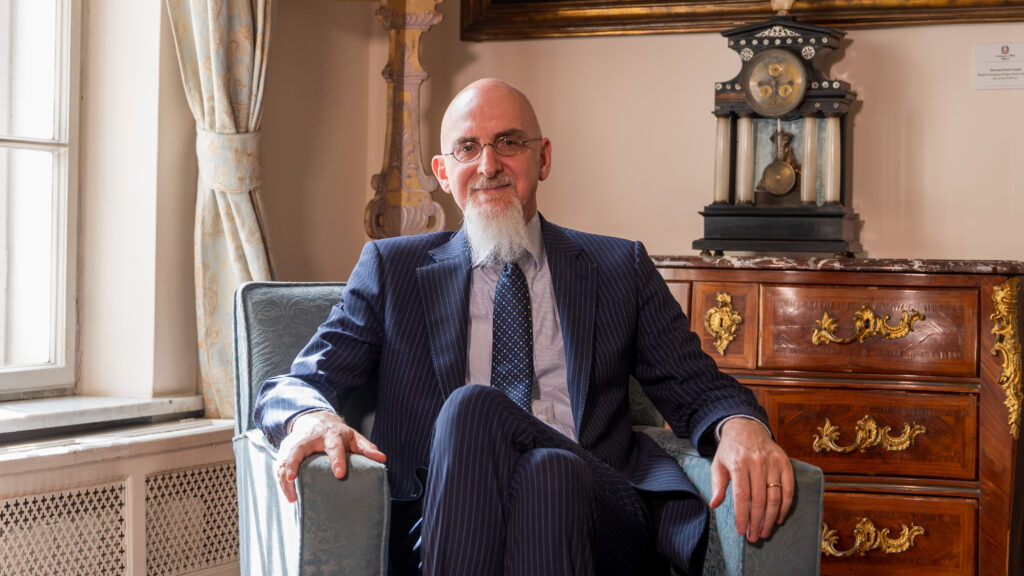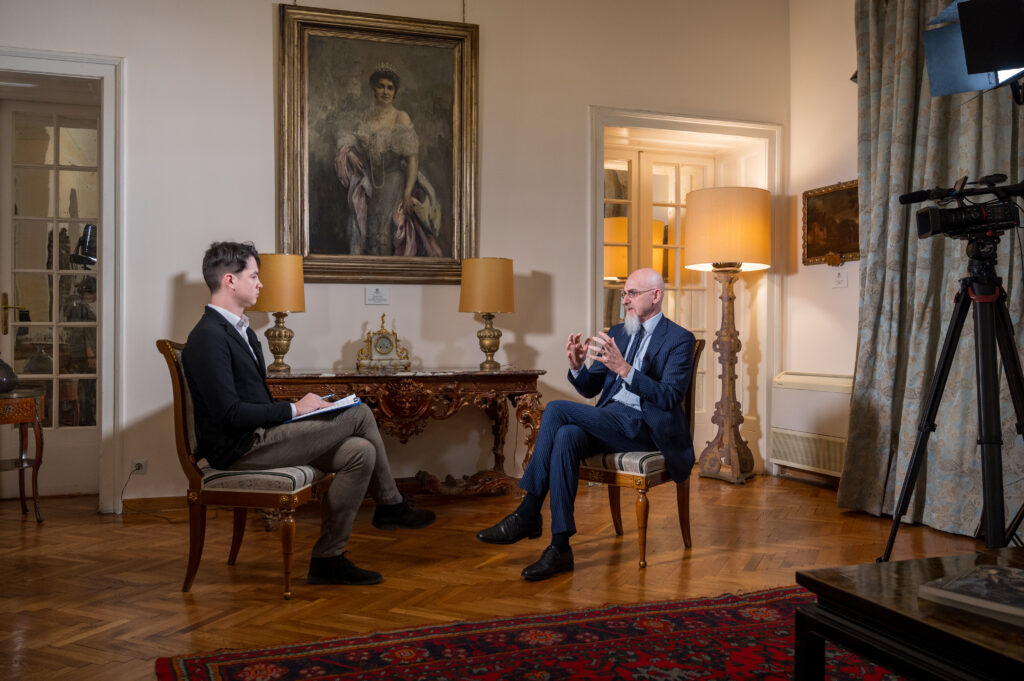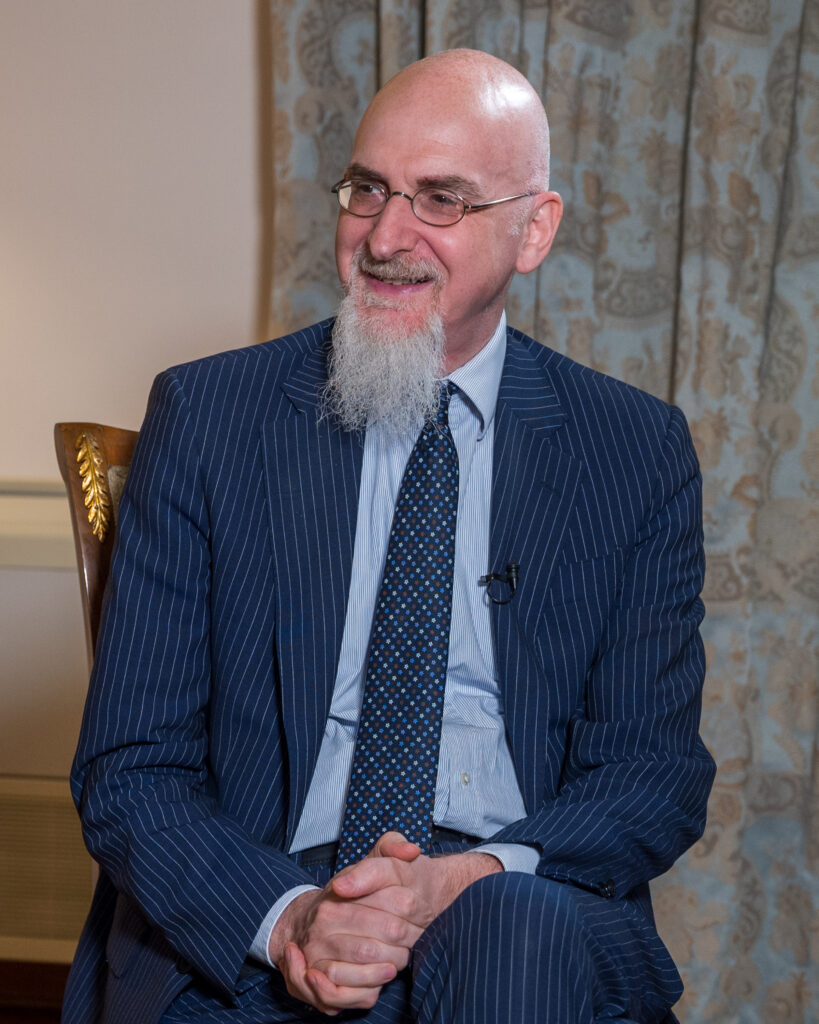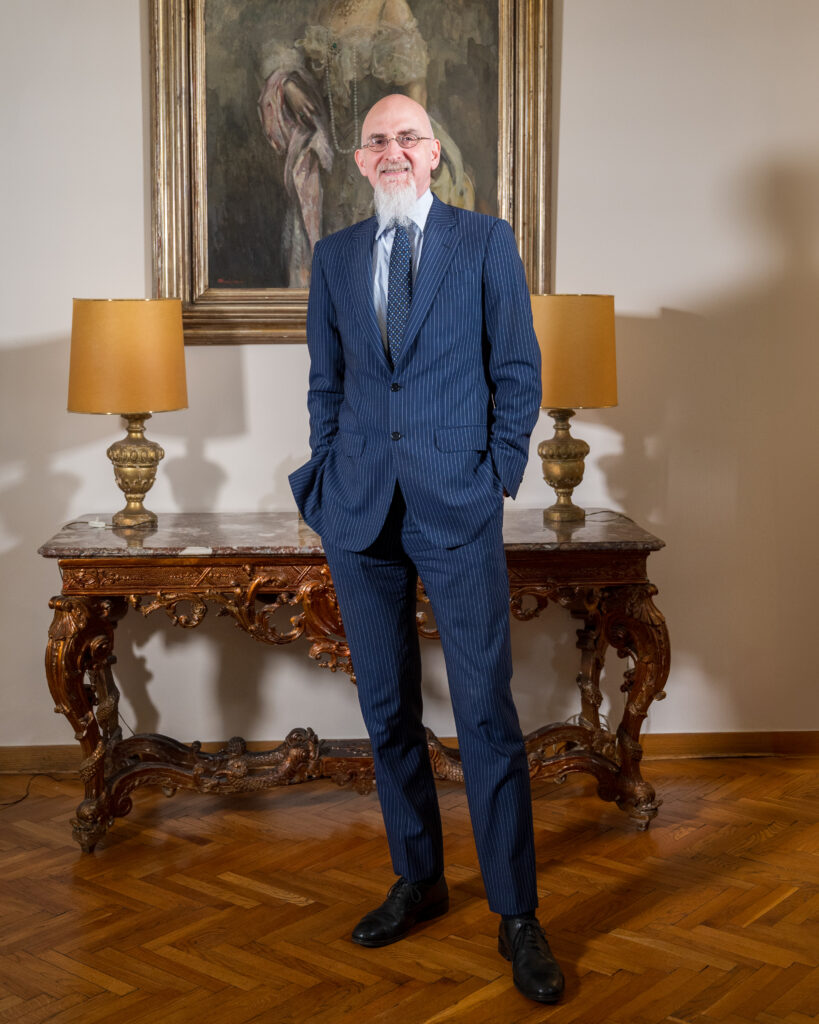How diplomacy, business and shared culture shape a modern alliance
 In this exclusive interview for Diplomacy & Commerce, H.E. Luca Gori, Ambassador of Italy to Serbia, reflects on the long-standing ties between the two countries, from historic diplomatic landmarks to modern-day business, science, and cultural exchanges. Drawing on his distinguished diplomatic career in Moscow, Brussels, and Washington, Ambassador Gori offers insights into Italy’s unwavering support for Serbia’s EU path, the evolution of bilateral economic cooperation, and the shared Mediterranean spirit that makes him feel at home in Belgrade.
In this exclusive interview for Diplomacy & Commerce, H.E. Luca Gori, Ambassador of Italy to Serbia, reflects on the long-standing ties between the two countries, from historic diplomatic landmarks to modern-day business, science, and cultural exchanges. Drawing on his distinguished diplomatic career in Moscow, Brussels, and Washington, Ambassador Gori offers insights into Italy’s unwavering support for Serbia’s EU path, the evolution of bilateral economic cooperation, and the shared Mediterranean spirit that makes him feel at home in Belgrade.
I want to begin this conversation by inquiring about your diplomatic career. You have served in key positions from Moscow to Washington to Brussels. How have all these experiences shaped your approach and perspective in diplomacy?
Well, to a large extent, because I had the opportunity to serve in different countries and politically significant contexts, both for Italy and for Europe’s relations.
In particular, I spent the early years of my diplomatic career in Moscow, and I remember the Russian culture very clearly, as well as the importance of that stay in understanding Europe from a unique perspective. This perspective is that of a European country with a significant Asian dimension.
Then, in Brussels, the experience was primarily focused on the European Union, as I worked for the Italian delegation to the EU. So the most important aspect of that posting was learning how the EU works — or doesn’t work.
But for all of us European diplomats, that European experience is genuinely essential. And then in Washington — I think that’s an extraordinary experience, because in Washington you see how the international agenda is shaped, how the main priorities are defined — not only for the U.S., but for the world. So from a professional point of view, it’s a remarkable experience.
All in all, from Moscow to Brussels to Washington — when you’re a diplomat, you travel, you live abroad, and you gain a deep understanding of how important it is to embrace different perspectives, to establish dialogue with those who come from other cultures, who have different interests they are defending. And that, I believe, is the most important lesson I’ve learned — the importance of respecting other people’s cultures, interests, and ideas.
 I would also like to ask you how these experiences compare to your current posting in Serbia. Are there any similarities, or perhaps some apparent differences?
I would also like to ask you how these experiences compare to your current posting in Serbia. Are there any similarities, or perhaps some apparent differences?
Every country, every capital or posting is different. Here in Serbia, what I truly appreciate is the warmth people show toward Italy. One of the first things I notice when I introduce myself to a Serbian guest or friend is a smile, which tells me that Italians are very well received in this country. My experience here in Serbia has been excellent in many ways.
There is also a shared history between Italy and Serbia that may not be familiar to all our readers. In 1879, an Italian diplomatic mission was opened in Belgrade — a key milestone in Serbian-Italian relations. This was also influenced by political changes in Italy and the legacy of the so-called Risorgimento. How did that historical moment shape both cultural and diplomatic ties?
It was a pivotal moment for Italy and its foreign policy. We established a diplomatic mission in Serbia just one year after the Congress of Berlin. That highlights the significance we attached to our policy toward the Balkan region. The opening of a mission here in Belgrade marked an increased importance of this region in Italian foreign policy.
Indeed, that was a very significant moment for our bilateral relations. And of course, everything followed from there, including the construction of this embassy between 1924 and 1926. It is, I must say, a beautiful building, but also a testament to the value we place on our relationship with Serbia. Last year, we celebrated the 100th anniversary of the Italian Embassy’s construction in Belgrade.
We must move from traditional sectors to those with higher technological value to keep pace with Serbia’s economic development
But since that moment, we have been working to build ties and relationships with Serbia across all sectors. I remember — if I may quote the great Serbian diplomat and writer Crnjanski — that in 1921, he travelled to Italy. He went to Tuscany, which happens to be the region I come from. In his travel journal, titled “Love in Tuscany,” he wrote that he had travelled to Italy, specifically to Tuscany, to establish visible and invisible connections between the two peoples and their respective countries.
And that is what we as ambassadors try to do when we are abroad. That is what I am trying to do here in Serbia — to build both visible and invisible connections with Serbia, across all possible sectors.
 In the past, you’ve written essays on foreign policy and international relations. How has your academic background influenced your work in diplomacy?
In the past, you’ve written essays on foreign policy and international relations. How has your academic background influenced your work in diplomacy?
I genuinely enjoy combining diplomatic activity with intellectual engagement. I strongly believe in the importance of bringing a historical perspective to diplomatic work. Today, we don’t study history nearly enough. And very often, we’re surprised by things happening around us — we tend to think they emerged out of nowhere. But that’s not the case.
There is history, there is context. And understanding that history and geopolitical context are essential for any diplomat to grasp what they are doing truly and to shape the kind of policies that are needed. So the two go hand in hand — one doesn’t work without the other? At least for me, yes. I believe in combining the academic dimension with diplomatic practice.
Given your experience working on EU-related matters, how do you view Serbia’s path toward European Union membership? And what role can Italy play in supporting Serbia in reaching that goal?
As you know, Italy is probably the EU member state most committed to accelerating the enlargement process toward the Western Balkans — and particularly toward Serbia. In recent years, we have consistently led efforts in Brussels to persuade others that moving in this direction is essential. Today, we must acknowledge that a new momentum is emerging surrounding the enlargement process in the Western Balkans.
Knowing history and geopolitical context is essential for any diplomat to understand their mission truly
It’s important not to miss that momentum. It’s also crucial for Serbia to seize this opportunity, which includes, for example, the opening of Cluster 3. That is a technical step, but one with significant political meaning. What we are trying to do now is to encourage Serbia to adopt the necessary reforms to move forward in the integration process. That includes, for instance, the adoption of media laws, which are expected to be discussed in Parliament in the coming weeks.
That also means working in favour of media pluralism, fighting corruption, and passing key legislation related to the electoral process. These are the things being asked by the President of the European Commission. They were also raised by Commissioner Várhelyi, the President of the European Council Charles Michel, and Kaja Kallas during their recent visit to Belgrade. These are the points they strongly emphasised in their discussions with Serbian officials.
Serbia and Italy are known for their highly successful economic partnership. There are currently more than 1,200 Italian companies operating in Serbia. How do you see this relationship developing in the future?
We have to evolve. Many Italian companies arrived in Serbia after the year 2000, particularly during the first decade of the 21st century. And of course, at that time, Serbia was a very different country. Today, Serbia is no longer a low-cost country. If you want to invest here, you must consider several key factors.
For us — and especially for me, as ambassador here — my role is to help our companies understand that this is a country transitioning from a low-cost model to one with a different kind of industrial and economic environment. Now we need to invest in new sectors that have a more advanced technological component. We must transition, so to speak, from traditional sectors to new ones to remain aligned with Serbia’s evolving economic development.
Are there any projects or initiatives in that regard that you would like to highlight?
Over the past two years, we have organised three business forums — two here in Serbia and one in Trieste. The most recent one took place on January 31 of this year. Serbia is the only country with which we have organised three business forums in just two years, which says a great deal about the importance we place on our bilateral relationship. It also reflects the strong interest within the Italian business community in this region, and especially in Serbia.
We have also strengthened the institutional presence of what we call the “Italy System” here in Belgrade. We now have Cassa Depositi e Prestiti, our development bank, which has opened an office in Belgrade. We also have SACE and SIMEST, our key financial institutions. We therefore have a robust institutional framework in place in Belgrade to support investments and bilateral trade between Italy and Serbia.
 You mentioned trade, and it is reported that the annual exchange exceeds € 4.5 billion. Which sectors do you consider the most promising for cooperation?
You mentioned trade, and it is reported that the annual exchange exceeds € 4.5 billion. Which sectors do you consider the most promising for cooperation?
At the business forum we organised, we mainly focused on three sectors: agriculture — particularly agribusiness — as the first; green and energy transition, as the second; and finally, digital and other types of infrastructure. These are the sectors we see as the most promising for strengthening the bilateral relationship between Italy and Serbia.
In the years following the COVID-19 pandemic, scientific cooperation has played a crucial role, not only between Serbia and Italy but also globally. However, the best examples of that cooperation for our two countries are, of course, the scientific forums held in Belgrade and Trieste.
Do you believe these activities are shaping the future of bilateral cooperation between Serbia and Italy? And what new potential has emerged in that regard?
I am very proud of the scientific cooperation we’ve developed between Italy and Serbia. As you rightly mentioned, we have organised two scientific forums and succeeded in bringing together a large number of Italian and Serbian scientists. On those occasions, we launched many joint projects and signed numerous agreements and memoranda of understanding. Specifically, we signed a bilateral agreement on technological innovation between Italy and Serbia.
We have established highly productive cooperation with all major scientific institutions in Serbia, including the Institute for Artificial Intelligence in Novi Sad and the BioSense Institute, as well as with the country’s science and technology parks.
In Belgrade, I feel at home — it’s a European capital with many Eastern layers that make it truly unique
I’ve visited all of these parks. They have, for instance, established cooperation with the Area Science Park in Trieste and the Human Technopole in Milan. So we’ve truly made an effort to build consistent collaboration among all these different institutions.
Let me also mention that one of our goals in the coming months is to open an Italy–Serbia innovation centre in Niš. This is a process still in progress, but I’m pretty confident that we’ll be able to realise it by the end of the year.
Of course, I wish you the best of luck with that, and I truly hope it comes to fruition.
Now, there’s a topic that always comes up in both Serbia and Italy — and that’s football. There’s a strong connection between Serbian and Italian fans. We’ve seen Serbian players in Italian clubs — the most recent example for my generation would be Vlahović — but also Italian coaches working in Serbia. What role do you think sport can play in diplomacy?
A very important one. Notably, the Italian Ministry of Foreign Affairs has a dedicated department for sports diplomacy. So today, sports diplomacy is officially part of our institutional approach.
So, it’s officially part of the structure?
Yes, it’s officially part of our institutional approach to foreign policy and diplomacy. Our Foreign Minister, Antonio Tajani, places a great deal of emphasis on sports diplomacy. And here in Serbia, as you mentioned, it’s pretty natural — because we have so many ties, not only in football, but also in basketball, volleyball, water polo, and tennis. There’s truly enormous potential for bilateral relations in these areas as well. In the past, we’ve organised several events related to sports diplomacy.
Let me specifically mention the Partita del Cuore, as we call it — a football match between the Italian national team of actors and singers and the legendary veterans of Red Star Belgrade. We held that event in Belgrade, in collaboration with Intesa and the Novak Djokovic Foundation. All the funds raised from that event were used to build a kindergarten in Raška.
 As you already mentioned, you were born in Tuscany — in Florence, if I understood correctly. That city is renowned for its art, history, and rich culture. Is there something from Florence that you would like to bring to Belgrade?
As you already mentioned, you were born in Tuscany — in Florence, if I understood correctly. That city is renowned for its art, history, and rich culture. Is there something from Florence that you would like to bring to Belgrade?
I would say Florence can preserve the beauty of its old city — the beauty of tradition — while also embracing the need to modernise its way of life and the city itself. That’s a major challenge for Florence, but also a significant challenge for Belgrade. We see many new developments in this city. There are strong efforts to modernise, but at the same time, you must preserve your identity and cultural heritage. I believe we’ve succeeded in that in Florence, and I hope it can serve as an example for Belgrade.
When it comes to Italy, we can’t help but mention wine. Serbia also has a rich winemaking tradition. What role can Italian wines play in the Serbian market, and what potential do you see for future cooperation between Serbian and Italian winemakers?
I am definitely one of the sectors where our cooperation is growing, and it’s also an area where Serbia is making remarkable progress — I can confirm that. Italy exports around 8 million euros worth of wine annually to Serbia. Alongside France, we are the top wine exporters in the EU.
We participate in the “Wine Vision” fair every year in Belgrade, which is truly a fantastic event. Each year, we host around 50 to 60 Italian companies, particularly from Verona, and the Vinitaly fair — the world’s most renowned wine exhibition. So, at the Wine Vision fair in Belgrade, we are very well represented.
Of course, Wine Vision is not just an opportunity to sell wine, but also to establish partnerships between Italian and Serbian producers or exporters. It’s also an excellent opportunity to educate the public about different types and qualities of wine.
To that end, we’ve organised — and will continue to manage — masterclasses in wine tasting, which is an activity we’re committed to continuing in the future.
Italy is the EU country most committed to accelerating Serbia’s path to European integration
Naturally, I also believe there’s potential for developing joint projects. In Italy, wine is deeply linked to tourism. In many regions, visitors can enjoy not only nature — for example, the countryside around Florence — but also fine wine and good food.
Therefore, combining these types of experiences and transforming them into attractive offers for tourists is crucial for Italy, and I believe it’s equally relevant for Serbia. This is a sector where our two countries can truly work together.
One last question — I’d like to ask: What are your favourite places in Belgrade since you arrived here? And what aspects of Serbia do you enjoy the most?
There are many places I enjoy here in Belgrade. First of all, what I like about Belgrade is that, on the one hand, it’s a European capital — I feel at home here. On the other hand, it’s not just a Western European capital. It’s a city where you can find many different “East(s)” — the East of Russia, the East of China, the East of Turkey, of Israel, of the Emirates…
That mix is genuinely fascinating to me. Additionally, I enjoy various other spots. For example, if I want to be active, I go to Ada Ciganlija to play padel. If I want to relax and take a walk, I go to the riverbanks — along the Sava or the Danube. I might go to Dorćol for a coffee or a meal.
Or just here around the embassy, in Savski Venac or Vračar — I like this part of the city. So it depends on what I’m doing, but I genuinely enjoy Belgrade and life in Serbia.
What I also love is that there are so many cafés and restaurants, and the culture of socialising here is very similar to what we have in Italy. We enjoy spending time together, whether it’s over coffee or a meal with friends. I genuinely feel at home.